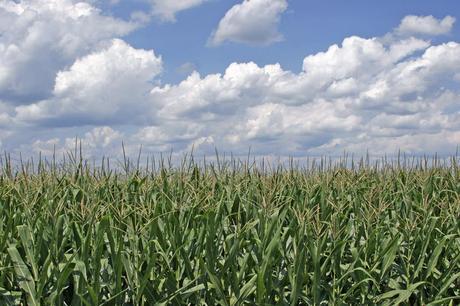
The rolling corn fields of Ohio
To conclude this series on poor alternatives to fossil fuels is one of the biggest culprits, albeit one that has flown under the radar as of late. Remember when corn ethanol was going to be the next big thing? Iowa farmers loved the idea, and Obama talked about an energy future in which it would play a prominent role. This was a clever strategic move, as several other candidates had (rationally) denounced ethanol as unwise. Obama's subsequent Iowa Caucus win built a lot of momentum for what was ultimately a winning campaign. While this endorsement of the technology was politically savvy, it was in no way backed by scientific fact. For instance, in 2009, the California Air Resources Board released a ruling on ethanol. According to Scientific American, the ruling listed the potential risks of increased use of E85 (which is, by the way, a blend of 85% corn ethanol and 15% oil) that include skyrocketing corn demand and increased production in ecologically sensitive areas. For example, if tracts of the Amazon were cleared to grow more corn, the net footprint of ethanol would be much worse than oil. This derives from the fact that a portion of the powerful 'carbon sink' the forest provides would be eliminated in such a situation. In addition to these concerns, ethanol is less effective of a fuel than gasoline, in terms of BTUs. This means fewer miles per gallon. Although the price of E85 may be much lower (currently $3.08 per gallon vs. $3.72 for gasoline) and the direct emissions per gallon slightly less than those of fossil fuels, ethanol is clearly unsustainable. What would be the likelihood of a rainforest clear-cutting catastrophe if ethanol fulfilled a bigger role in the US energy spectrum? High. US Production of corn (40% of global supply) has been decreasing for several years, and could continue to do so as aquifers under the Great Plains become depleted. Meanwhile, demand is on a steady increase. Corn is one of the most consumed staples on earth, especially in Latin America. But when 4.7 billion bushels were diverted to ethanol production in 2010 (a third of US corn output) global markets began to feel the strain of food shortages. Although about a quarter of all spent corn from the refining process is usable as animal feed (Source), the demand generated by replacing just half of America's gas consumption with E85 would likely be sufficient to precipitate slash-and-burn farming in Africa, South America, and elsewhere, destroying carbon sinks and thereby increasing the impact of all subsequent CO2 emissions from any source in the world. The facts are clear. Ethanol, like 'clean' coal, natural gas, and nuclear power, has no role in a sustainable energy outlook for America and the world. Thanks for reading this four-part series on renewable energies that aren't wise choices. Let me know how you liked it in the comments.






